Avarage Rating
Archaeology Guide (1-99/120)
Archaeology, released in March 2020, is one of RuneScape 3’s most intricate and rewarding skills. Combining lore, exploration, and rich XP opportunities, it offers players a way to unearth ancient relics, uncover hidden secrets, and profit during training. Whether you’re chasing max level 99 or aiming for 120 for the Master Cape, this comprehensive guide will walk you through every stage of progression with optimized methods, detailed site strategies, and tips for efficient leveling.
For custom grinds and alternative metas, see our RSPS list and pick a server that fits your style.
Archaeology is more than just digging – it’s a deep lore-driven skill that rewards time and knowledge. You'll work with the Guild, complete research missions, unlock relics, and solve mysteries as you shape your own path through Gielinor’s forgotten history. This RS3 Archaeology guide will help you move from level 1 all the way to 99 (and beyond to 120), exploring everything the skill has to offer at every stage.
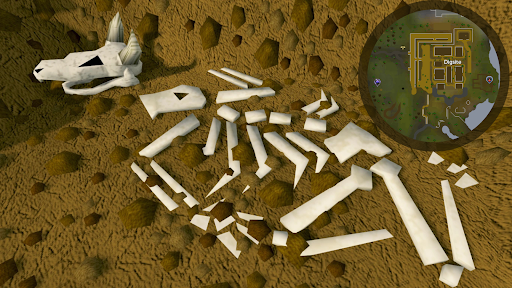
Getting Started
Before digging into Gielinor’s ancient history, it’s worth setting up properly for efficient Archaeology Training RS3. The skill is designed with both depth and clarity, so learning the fundamentals early pays off in the long run. Whether you're brand new or returning after a break, the tutorial at the Archaeology Guild RS3 north of Varrock provides everything needed to get going.
You can reach the guild by using the Varrock Dig Site teleport (from the Digsite Pendant or Archaeology journal) or the nearby Varrock Lodestone. Upon arrival, you’ll be introduced to excavation basics, restoration mechanics, and early dig site navigation.
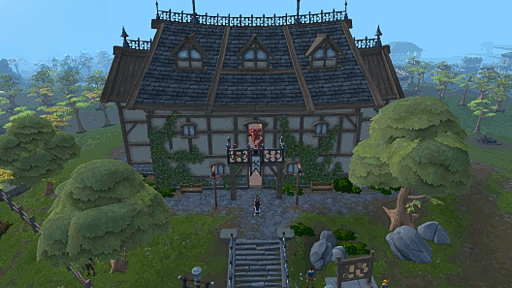
Essentials to Begin
- Toolbelt. You’ll receive your first Mattock, the main tool for excavation, during the tutorial. Mattocks function similarly to pickaxes in Mining but are specific to Archaeology. Once added to your toolbelt, they’re always available – you don’t need to carry them in your inventory.
- Material Storage. As you dig, you’ll gather not only damaged artefacts but also materials. These are automatically sent to a special storage container unlocked during the tutorial. This material box is upgradeable through achievements and outfits, and it helps reduce banking frequency significantly.
- Screen Interface. The Archaeology interface includes key elements to keep track of your activity. Get familiar with the following tabs early – they’re your gateway to smoother progression.
- Chronotes (the skill’s currency).
- Active artefact progress.
- Restoration workspace access.
- Research management.
- Dig site map and journal integration.
Pro Tip. The Archaeology skillcape, unlocked at level 99, provides access to a portable material box, extremely useful for high-level training. Until then, make use of material caches located across dig sites. These allow you to stock up on materials without having to rely solely on excavation drops.
Upgrading Mattocks
Upgrading your Mattock is one of the most impactful things you can do to speed up your progress. Each higher-tier Mattock improves Precision (your chance to make excavation progress with each action) and sometimes Speed (how often you dig per second). Below is a helpful chart to guide your upgrades in this RS3 Archaeology guide.
| Mattock | Level Requirement | Precision | Speed |
|---|---|---|---|
| Bronze | 1 | 1 | 1 |
| Iron | 10 | 2 | 1 |
| Steel | 20 | 3 | 1 |
| Mithril | 30 | 4 | 1 |
| Adamant | 40 | 5 | 1 |
| Rune | 50 | 6 | 1 |
| Dragon | 60 | 7 | 1 |
| Imcando | 80 (quest required) | 9 | 2 |
It’s best to upgrade Mattocks as soon as you meet the level requirement, especially moving from Rune to Dragon, and then from Dragon to Imcando. These changes provide noticeable gains in XP per hour and reduce time spent at each hotspot.
Other Early Tools and Unlocks
During your first hours of RS3 Archaeology Training, you’ll also gain access to the following items.
- The Archaeology Journal – A teleport item and progress tracker.
- The Research Table – Allows you to send out assistants to gather items or earn passive XP.
- The Monolith – Where relic powers are activated (available early, but more useful later).
- Collections and Collectors – NPCs who trade Chronotes and rewards for complete artefact sets.
In your early levels, focus on collecting damaged artefacts and restoring them to gain both experience and materials. Many of these will be turned into collectors like Soran or Velucia for Chronotes, which help you unlock RS3 Archaeology perks, equipment, and dig site access.
Daily Routine for Beginners
Starting strong includes establishing a simple but effective routine, such as the one outlined below.
- Dig at hotspots that match your current level.
- Restore artefacts using gathered materials.
- Hand in sets to collectors for XP and Chronotes.
- Send researchers on missions as you continue skilling to gain passive XP and useful materials in the background.
- Check the journal for active mysteries or site requirements.
Each of these steps builds a strong foundation that will carry you through the more complex layers of the skill. Archaeology rewards consistent progress, and getting comfortable with its early structure helps you level up faster without wasting time.
Core Mechanics
Archaeology in RS3 is a beautifully complex skill involving excavations, material gathering, restorations, and deciphering RS3 archaeology mysteries – hidden objectives at dig sites that unlock content, lore, and rewards.
How the Skill Works
- Excavation. Dig at hotspots to acquire damaged artefacts and materials.
- Restoration. Use materials to restore damaged artefacts at the workbench.
- Chronotes. Earned by turning in restored artefacts. These are used for upgrades and perks.
- Research. Send out assistants to gather rewards and passive XP.
- Mysteries. Solving puzzles at dig sites unlocks relics, boosts, and more.
Each dig site contains multiple hotspots, puzzles, and hidden lore elements. Solving RS3 Archaeology mysteries often grants access to special areas or permanent buffs.
Example Mystery: "The Forgotten Prisoner" at the Infernal Source
This mystery involves unlocking multiple locked doors and reveals critical lore about Zamorak’s followers.
Leveling Guide: 1–99/120
Let’s break down the Archaeology Materials RS3 training paths for optimal XP gains from level 1 to 120. This route offers an efficient experience that also supports collection progress and relic discovery.
Levels 1–5 – Kharid-et (Legionary Remains)
The opening phase introduces Zarosian artefacts, with the Zarosian training dummy as a frequent find. It’s a reliable spot for gaining early experience and starting your material stockpile, setting a solid foundation for restoration and collector turn-ins.
Levels 5–12 – Kharid-et (Praetorian Remains)
Progressing further into Kharid-et opens access to artefacts tied to the mystery "Prison Break". Completing it unlocks deeper parts of the fortress and improves dig site efficiency. Continue excavating here to fill out your museum collections and begin storing duplicates for future collector turn-ins.
Levels 12–20 – Kharid-et (Gladiatorial Remains)
This stretch allows for the steady gathering of Zarosian artefacts required by Soran. Focus on restoration rather than just stockpiling materials – restored items contribute more to your total XP gains than raw excavation alone. You can now complete your first full collector sets, which yield Chronotes and unlock early rewards.
Levels 20–30 – Everlight
At level 20, unlock the Everlight dig site and shift to Saradominist artefacts. Items like the Dagon lamps and Ceremonial Goblets offer easy restorations, with a new set of materials.
Materials here include white marble and Keramos, both essential for multiple artefact types. Start gathering them in bulk now to avoid shortages later.
Levels 30–42 – Everlight (Amphitheatre Area)
Training in this level range introduces better hotspot rotations and marks the beginning of consistent Chronote income. At this point, you’ll likely have enough restored artefacts for multiple repeatable collection submissions. The XP may not spike here, but the stable returns and low material costs make it a dependable option before gaining access to the Infernal Source.
Levels 42–70 – Infernal Source
The Infernal Source features Zamorakian artefacts such as the Hellfire halberd and Chaos star, both commonly requested in high-value collections.
This dig site contains several mysteries with multi-step requirements and meaningful rewards. Completing "The Vault of Shadows" grants access to additional excavation areas and unlocks new relic opportunities. Continue refining your collection sets and advancing through restoration projects to stay on pace for your next qualification milestone.
Levels 70–99 – Stormguard Citadel and Warforge
This range opens access to two of the most efficient mid-to-high-level training locations. Stormguard Citadel offers Armadylean relics, whereas Warforge is home to Bandosian artefacts like the Dorgeshuun spear and Saurthen remains.
XP rates take a noticeable jump here, making it easier to maintain steady progress. Warforge is particularly effective thanks to its strong material-to-artefact balance and excellent synergy with repeatable collector sets. Shift between Stormguard and Warforge depending on your current collection goals and which relic components you're aiming to unlock.
Levels 99–120 – Orthen Dig Site
Orthen becomes the primary destination for high-level training. Artefacts such as the Rex skeleton and Ancient Zygomite are central to advanced collection sets and are key ingredients in unlocking some of the most powerful relics.
The dig site includes four distinct areas, each becoming accessible at specific level milestones beyond 99. Research missions can provide a steady supply of materials and passive XP. Material caches located across the site help speed up the restoration process. Once all sections are open, cycle through them based on material availability and collection requirements to maintain optimal efficiency.
| Level Range | Site | Artefact Focus | Notes |
|---|---|---|---|
| 1–20 | Kharid-et | Zarosian | Fast XP, unlock early relics |
| 20–42 | Everlight | Saradominist | Easy materials |
| 42–70 | Infernal Source | Zamorakian | High XP from hotspots |
| 70–99 | Warforge / Stormguard | Bandos / Armadyl | Huge XP with boosts |
| 99–120 | Orthen | Dragonkin | Best XP, AFK-friendly |
Orthen stands out not just for its XP rates, but for how efficiently it supports long training sessions. With access to all four excavation zones and a well-managed relic loadout, players can maintain high output with minimal interruptions. It’s also where many of the most lucrative and lore-rich mysteries reach their conclusion, making the final stretch from 99 to 120 both rewarding and practical.
Qualifications and Progression
Progress in Archaeology is gated not just by excavation levels and Archaeology Relics RS3, but also by a structured tier system known as Qualifications. These represent your standing with the RS3 Archaeology Guild and determine which dig sites, tools, and features are available to you. As you level up and meet certain milestones, you'll automatically become eligible for qualification promotions. Each promotion expands your options and brings you closer to unlocking the full potential of the skill.
List of Qualifications
- Assistant (Level 5) – Grants access to Everlight, your first non-tutorial dig site. You can begin working with Saradominist artefacts and solve early mysteries that lead to your first relic power.
- Associate (Level 20) – Unlocks the Infernal Source, where you'll encounter Zamorakian relics, fiery puzzles, and the introduction of more challenging excavation mechanics. This tier also grants access to your first research missions, allowing for passive XP gains.
- Expert (Level 42) – At this stage, you can explore the Stormguard Citadel, an Armadylean-themed site with aerial ruins and complex excavation zones. Your researcher roster expands, and you begin to unlock higher-tier research missions that yield better materials and artefacts.
- Master (Level 70) – Enables entrance to Warforge, a massive Bandosian military facility. This area offers some of the most profitable artefact sets and introduces deeper lore elements. At this qualification, you'll likely begin refining your relic loadout and optimizing research cycles.
- Guildmaster (Level 99) – This is the highest qualification and a major milestone in the skill. It grants full access to the Orthen Dig Site, a Dragonkin-focused area with the most complex and rewarding mysteries in the game. It also unlocks your third relic slot, allowing for advanced loadouts that significantly impact gameplay.
Relic Powers and Loadouts
You’ll encounter relics early on, but their value becomes more apparent as you level up. Each relic grants a permanent passive effect when attuned at the monolith located at the Archaeology Guild. You’ll start with one relic slot, gain a second as you progress, and unlock the third upon achieving Guildmaster status at level 99.
Some relics improve skilling performance, and others provide benefits in combat, support, or utility-focused situations. Selecting relics that match your current activity – whether you're training, bossing, or taking on Slayer tasks – can lead to a noticeable increase in overall efficiency.
Recommended Relics
- Pouch Protector – Prevents degradation of Summoning pouches during combat.
- Font of Life – Increases max life points by 500, enhancing survivability in both PvM and PvP.
- Death Ward – Reduces incoming damage when your life points fall below 10%, which can be a lifesaver in high-risk encounters.
These relics are especially helpful during extended Archaeology training RS3 sessions or when multitasking with combat and Slayer. Activating the right combination can significantly reduce downtime and make Archaeology more efficient overall.
Later in your journey, you’ll discover more niche Archaeology relics RS3 tied to skill boosts, such as those that auto-bank materials or increase resource gathering rates. Don’t hesitate to swap out relics based on your activity – this flexibility is one of the core strengths of Archaeology’s progression system.
Beyond relics, each qualification milestone also unlocks cosmetic rewards, journal entries, research titles, and deeper integration with RuneScape’s lore. The path from Assistant to Guildmaster can be lengthy, but every stage introduces new gameplay elements that help Archaeology remain engaging and varied throughout your progression.
Dig Sites Overview
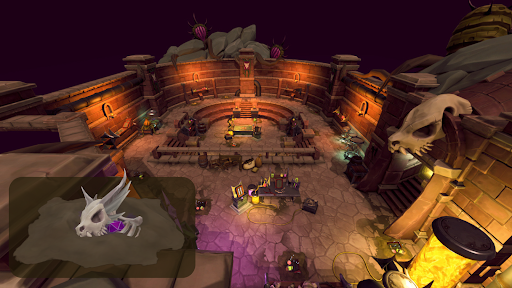
There are six major dig sites, each with its themes, artefacts, and Archaeology Boost RS3 opportunities. Some sites are unlocked automatically, others require qualifications.
Key Dig Sites
- Kharid-et (Zarosian) – Level 1+
- Everlight (Saradominist) – Level 20+
- Infernal Source (Zamorakian) – Level 42+
- Stormguard Citadel (Armadylean) – Level 70+
- Warforge (Bandosian) – Level 76+
- Orthen (Dragonkin) – Level 99+
Each site introduces unique mechanics, materials, and mysteries tied to its respective factions. As you move through the level brackets, the dig sites become more complex but also more rewarding in terms of XP and relic unlocks. Planning your progression around the unlock levels of these sites can help you avoid inefficient training paths and make the most of each Archaeology boost RS3 offers.
Boosts to Use
- Master Distraction and Diversions Aura – For temporary XP buffs.
- Skilling Outfits – Get the Archaeologist’s Outfit from collection completions.
- Wise Perk – Use it on your skilling gear.
- Pylon Charge Events – Found in Orthen, grant large boosts during activation.
Timing these boosts around high-yield excavation hotspots can significantly improve XP per hour. Some players choose to stack multiple boosts, such as combining the Wise perk with outfit bonuses and active Pylon charges, to maximize gains during focused training sessions.
These dig sites are lore-rich and connect to the overarching storylines of RuneScape gods, especially Zaros, Armadyl, and Bandos. They aren’t just training zones – they double as narrative set pieces where players uncover long-lost secrets, ancient conflicts, and the lingering consequences of divine power.
Relics and Monolith
Progressing through 1–99 Archaeology RS3 unlocks powerful relics that offer passive bonuses once attuned at the monolith found at the Archaeology Guild. Each relic requires specific artefacts or puzzle solutions and provides ongoing effects once activated. These powers are tied to a limited pool of energy, so choices matter, especially during the mid to late levels of training.
How Relics Work
Relics are unlocked by completing mysteries, turning in artefacts, or discovering unique items hidden in dig sites. Each relic provides a specific perk, such as improved XP rates or combat benefits. Once unlocked, the relic is permanently available for attunement.
The monolith has 30 total energy at maximum (with Guildmaster Qualification). Each relic consumes part of that pool.
Popular Relics for Training:
- Brooch of the Gods – Automatically sends materials to your storage.
- Divine Conversion – Converts all memory types when training Divination.
- Pouch Protector – Keeps summoning pouches from degrading.
- Skilling Perks – There are various XP-boosting relics across gathering and artisan skills.
To optimize your training, match relics with the style you prefer – whether passive efficiency or high output.
Research System
Once you’ve completed the early qualification tiers, you’ll gain access to the Research Table at the Archaeology Guild. Here you can manage Archaeology Collections RS3 projects and assign researchers to specific missions for passive XP and rewards.
Mechanics of Research
- Recruit researchers through the tutorial and qualifications.
- Assign them to expeditions for timed missions (2–16 hours).
- Receive materials, artefacts, and occasionally relic components.
Higher-level researchers and better missions unlock over time. Expeditions continue in real time and complete even when you're logged out, making them a dependable passive source of progress.
Mission Types
- Chronote Yield – Increases your Guild currency supply.
- Material Retrieval – Fills your bank with rare materials.
- Mystery-Linked Missions – Needed for some site-specific mysteries.
Maintain a steady rotation of assignments to build up stockpiles of rare materials, which will later be essential for efficient artefact restoration and collector hand-ins.
Collections and Collectors
The heart of Archaeology’s repeatable XP and profit system comes from its collectors. Each faction or individual collector requests full sets of restored artefacts. Completing these sets grants Chronotes, reputation toward the Archaeology Guild, and access to various unlocks that improve training efficiency. Using the Archaeology Journal RS3, players can easily track which artefacts are required for which collections, whether they are repeatable or limited to a one-time completion.
Collectors are scattered throughout the guild and across the wider game world, each with themed interests connected to specific dig sites. For example, Soran specializes in Zarosian artefacts found in Kharid-et, and Giles focuses on Saradominist items from Everlight. These collections go beyond being a bonus feature – they serve as a core component of a profitable and efficient Archaeology training strategy.
Collection Turn-In Rewards
- Chronotes – This is the primary currency for Archaeology RS3. Chronotes can be spent at the Guild Shop to unlock useful perks, buy outfit pieces, or purchase consumables. They’re essential for speeding up research, unlocking relics, and gaining access to high-tier benefits.
- XP – Players are awarded a solid amount of Archaeology experience upon turning in a complete set. This makes collections an excellent way to supplement excavation and restoration training.
- Progression – Completing certain collections contributes directly to unlocking relic powers, research missions, and even titles. Some relics are only obtainable once you've turned in specific artefact sets a set number of times.
Key Collectors and Their Perks
| Collector Name | Affiliation | Notable Reward |
|---|---|---|
| Soran | Zarosian | Guild perks, repeated for profit |
| Velucia | Varied | Quick Chronotes, good early-game |
| Giles | Saradominist | Access to unique relics unlocks |
| Dagon the Gatekeeper | Zamorakian | Entry into the Infernal Source site |
Each collector is tied to specific dig sites and artefacts. Turning in a collection not only clears space in your material storage and bank but also allows you to build up a buffer of Chronotes for relic management or research boosts. High-efficiency players often plan entire training routes around the optimal rotation of dig site → restore → collector hand-in → repeat.
Use your journal to map out which artefacts to dig up and where to turn them in. Prioritize unique collections for one-time rewards before repeating the high-yield ones like Soran’s Zarosian collection for efficient training. The journal keeps a clear record of which collections you've completed and highlights any you’re close to finishing. This makes it much easier to plan restoration sessions, avoid material shortages, and time your research missions to line up with collection goals.
Once you've unlocked several collectors and familiarized yourself with their preferences, you can start preparing artefacts in bulk for hand-ins. This approach works well when paired with skill outfits and relic powers that reduce material usage or speed up restoration. Efficient collection cycling becomes even more valuable once you reach higher levels and want to focus on relic unlocking or earning large amounts of Chronotes without constant excavation.
In the long term, balancing collection turn-ins with excavation and restoration is one of the best ways to keep your Archaeology training structured and profitable. Some collectors also offer lore-based dialogue and hidden achievements for completionists, adding another layer of engagement for those interested in the broader narrative of Gielinor’s ancient past.
Mysteries and Achievements
Progress in Archaeology isn’t just about collecting artefacts and handing them in – it’s also deeply connected to the unfolding of in-game lore through a structured system of puzzles known as archaeology qualifications RS3 calls Mysteries. These mysteries are woven into every dig site and act as hidden objectives, unlocking relics, dig site expansions, lore entries, and powerful tools. Some mysteries are simple enough to solve through dialogue with NPCs or basic artefact restoration. Others require precise item placement, puzzle-solving, or interaction with obscure symbols scattered across the excavation zones.
What makes mysteries compelling is how they naturally connect progression with exploration. You aren’t simply clicking hotspots – you’re uncovering layers of Gielinor’s history and gaining access to new areas and training opportunities in the process. Solving mysteries often rewards you with key items, additional excavation hotspots, or upgrades to relic powers and research functions.
How to Unlock and Solve Mysteries
Mysteries can be unlocked in several ways, including the following four.
- Speaking to specific NPCs at dig sites or the Archaeology Guild.
- Completing research missions that uncover lore.
- Discovering and restoring certain artefacts.
- Interacting with environmental objects, levers, or locked doors.
Many mysteries span multiple dig sites or levels. Some can be completed early in your training, but others remain incomplete until you reach specific level thresholds or gather the required artefacts. The Archaeology Journal helps track your current mystery progress, и the Dig Site Map highlights which mysteries are available and which ones still need to be finished.
Mysteries don’t always give obvious feedback when you’re on the right track. Instead, you’ll often need to observe site details – statues, inscriptions, door mechanisms, or ruins – and try combinations of artefacts or tools. For players who enjoy discovery and lore, it’s one of the most rewarding parts of the skill.
Examples of Notable Mysteries
- Prison Break (Kharid-et). This mystery allows access to restricted areas within the fortress. Completing it opens new excavation hotspots and helps uncover some of the earliest Zarosian secrets available to low- and mid-level players.
- The Spy Who Loved Metal (Stormguard Citadel). This multi-stage mystery is tied to the airborne Armadylean dig site. Completing it unlocks the Keshik Tower, where players can access powerful relic components and high-tier artefacts.
- Know Thy Measure (Warforge). A Bandosian-themed mystery involving schematics and mechanical blueprints, essential for unlocking lore related to goblin engineering and excavation hotspot upgrades.
Achievements and Completion Goals
Many Archaeology RS3 achievements are tied to mystery completion, relic discovery, and full site restoration. Players aiming for the Completionist Cape must finish all mysteries, reach Guildmaster qualification, and restore a massive number of artefacts.
Achievement diaries will also include objectives like:
- Restoring a certain number of artefacts.
- Solving site-specific mysteries (e.g. unlocking all Stormguard Citadel chambers).
- Completing all collections at least once.
These milestones provide not only cosmetic rewards and recognition, but also powerful training tools – including skill boosts, relic upgrades, and access to otherwise hidden dig zones. Keeping track of them through the journal or Runescape’s achievement interface ensures you’re not missing critical steps during your journey from level 1 to 120.
Final Tips & Summary
Archaeology is one of the most rewarding and polished skills in RuneScape 3. It combines lore, exploration, skilling, and passive progression into a long-term training experience. While it may appear grindy at times, the constant reward cycle from relics, collections, and mysteries keeps it engaging from start to finish.
Here’s a quick recap of strategies for leveling 1–99 Archaeology RS3:
- Focus on unlocking dig sites as soon as your level and qualification allow.
- Prioritize collector sets for early Chronotes and passive XP gains.
- Train at hotspots aligned with your current relic/material inventory.
- Keep your research table constantly active.
- Use relic powers and outfits that suit your current activity (excavation vs. restoration).
Whether you’re here for completionism, efficient skilling, or simply to unravel the secrets of Gielinor’s past, Archaeology offers more than just XP — it gives you a reason to explore, think, and plan.
Now grab your mattock and get digging, adventurer. The history of the world awaits.
Comments
Add a comment
Related Articles

OSRS Kalphite Queen: Strategy,...
Killing strategies, tips, drop rate table, and more. Having trouble killing this monster? This guide...
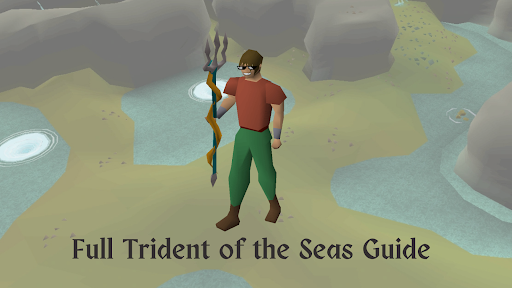
Trident of the Seas
Get detailed info on the Trident of the Seas in OSRS, including stats, charging method, combat use,...
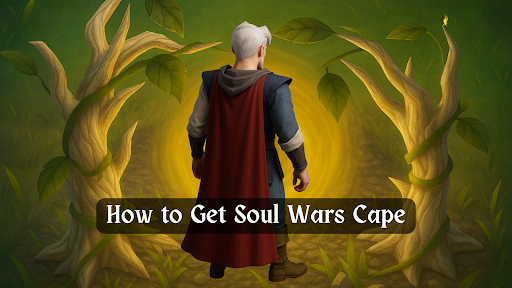
Soul Wars Cape
Get the Soul Wars cape with ease. See its stats, uses, bonuses, variants, features, and how to custo...

Be the first to give your opinion.